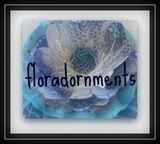













Monhegan , Island out to Sea, is the Algonquin name for this magnificent rocky enclave ten miles off the mid coast of Maine. Known to native Americans for prime fishing, it thrives as a working lobstering village.
Since the 1890's, Monhegan has been a summer haven for artists who appreciate its tranquility and ensuing wilderness of untamed beauty. Among those who have found inspiration include N.C. Wyeth (1882-1945), Edward Hopper (1882-1967), Rockland Kent (1882-1971), Andrew Wyeth (1917-2009), and Jamie Wyeth (1946- ).
The spirit of Monhegan prevails in the 75 independent year round souls who toughen it out during the extremes of weather while providing that sense of community to each other and that connection to the land. Although the population swells to 700 visitors in summer, this 1.7 mile long by .7 mile wide island retains its private character and charm. There are no paved roads on Monhegan, nor cars with license plates. It is in fact a remote respite encompassing 17 miles of hiking trails through Cathedral Woods with its fairy houses, meadows, headlands along coves and ledges. Cliffs on the east side of the island are some of the highest on the coast of New England while Lobster Cove houses the wreck of the D. T. Sheridan (a tugboat that ran aground in 1948) as Harbor Seals frolic on Duck Rocks near Pebble Beach. The Island Inn is a gem!
Departing Port Clyde on the hour long ferry leads to spellbinding beauty in a place that feels other- worldly. As an artist who has painted on Monhegan, I can attest to the extraordinary light and limitless images that inspire creativity. It is an experience of heaven on earth in a deeply relaxing atmosphere, shrouded in fog, brightened by lupines;...truly, isolation at its best!




















































